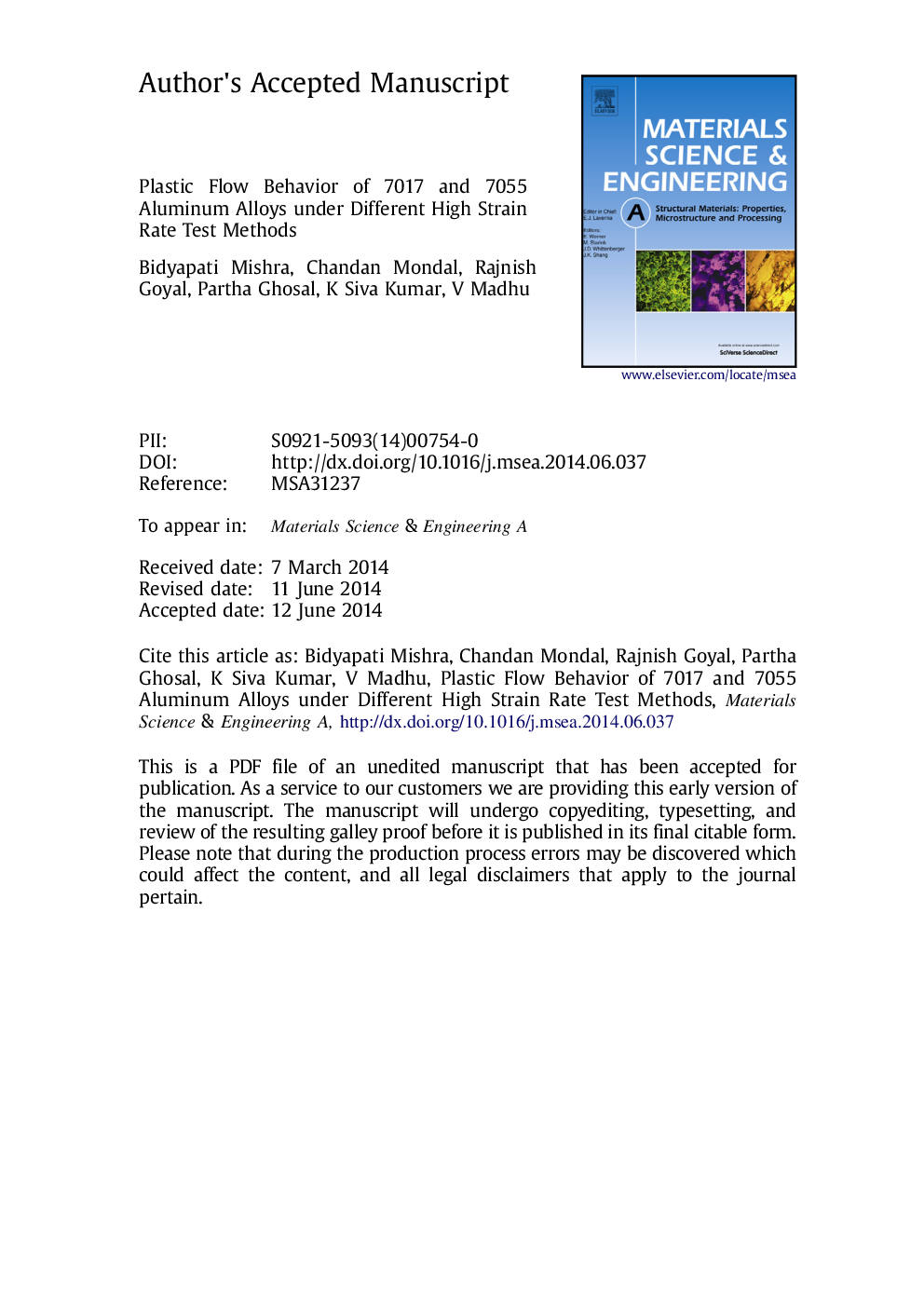| Article ID | Journal | Published Year | Pages | File Type |
|---|---|---|---|---|
| 7980880 | Materials Science and Engineering: A | 2014 | 42 Pages |
Abstract
The present study reports a comparison of high strain rate flow behavior of 7055 and 7017 aluminum alloys using various test methods such as Dynamic Indentation (DI), Taylor Impact, and Split Hopkinson Pressure Bar (SHPB). It is established that the dynamic flow behaviors of both the alloys show three distinctly different regions. The span of each region and transition between the regions depend primarily on the strain rate and microstructural features of the target material. However, the flow behavior of these two alloys differs in a dynamic recovery driven local softening phenomenon that is manifested in a gradient of hardness values underneath the indentations. Such difference possibly arises due to the alloy content and inherent heterogeneous deformation of the alloys. While comparing the test results with the actual ballistic performance, it is shown that no single test method could reflect the actual ballistic penetration behavior individually. However, the inferences drawn from the combined results of the three tests have a direct correlation with the actual ballistic behavior. Furthermore, it is to be noted that although similar strain rates could be achieved in all the methods, the absolute strain and state of stress that the material is subjected to in each of the test methods are different. It is, thus, necessary to establish the correlationship between the effect of test methods and strain rate on flow stress and the accompanied changes in microstructural response of the materials.
Keywords
Related Topics
Physical Sciences and Engineering
Materials Science
Materials Science (General)
Authors
Bidyapati Mishra, Chandan Mondal, Rajnish Goyal, Partha Ghosal, K. Siva Kumar, V. Madhu,
